Most people see creativity as a talent, rather than a skill.
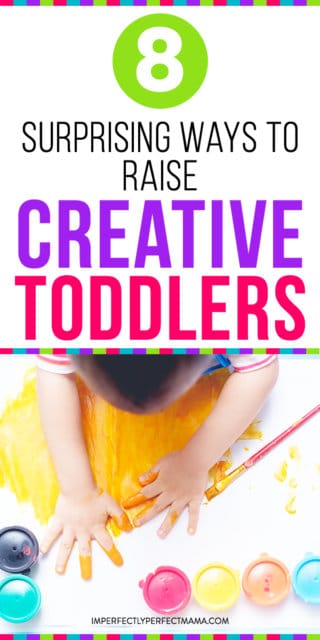
Children are bound to “be creative,” but as they grow up, it all gets lost in their routines and responsibilities. Or so they say.
The truth is that creativity is a skill.
And, like any skill, it can be developed (at any age), all we need to do is understand what happens behind the scenes.
Seven years ago I started working making video games. Since then, I have taken many courses on creativity, and every day I get more and more surprised at how little we know of creative thinking as a society.
The truth is that every task can be better achieved with creative thinking. It’s all about problem-solving and has little to do with just having the talent.
Luckily, getting into a creative mindset is as easy as pie! And, sparking your toddler creativity is a delightful journey for the whole family.
Here are the most simple (and surprising) ways to foster your child’s creativity.
1. Embrace Boredom
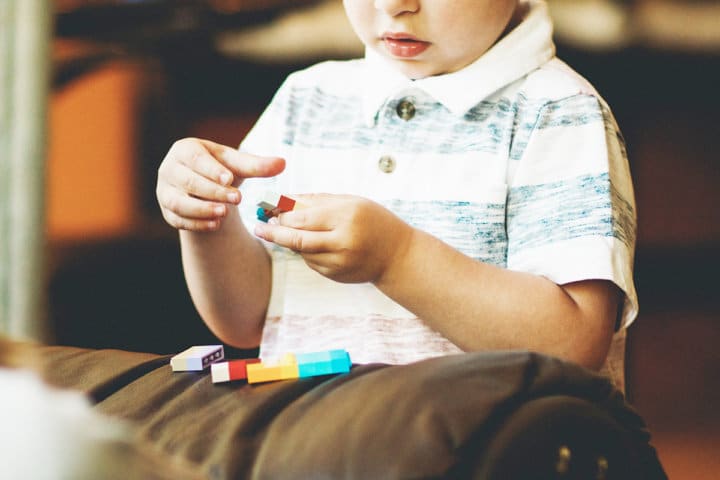
This is by far my favorite.
In today’s society, we are so used to instant gratification, that we forget how it feels to be bored.
We are scared of boredom. It’s often seen as a negative concept.
We are always using our smartphones, we can watch the news, read books, watch TV, or read a blog post on the go. We don’t usually get bored, so our relationship with boredom has become unhealthy.
But being bored is wonderful!
It’s the place where our minds can really wonder. If you don’t believe me, just think about all the great ideas we have in the shower!
Sparking creativity when being bored really works. And smartphones and TV have killed boredom. The space our brains used to have for creative thinking are now filled with Mickey Mouse or Candy Crush. (And this comes from a Game Developer who loves Video Games!)
I’m going to take a load off your shoulders. Keeping your child entertained all day long is not your job.
Your job is to be a mama!
If you see your child crying because of boredom, give yourself a pat on the back! You did it! You have a bored toddler.
Now what?
Leave her be.
Your child will get out of her own boredom by herself. Just make it safe for her to discover the space she is in.
At first, when Ollie looked for us when he was bored it was really hard for me to ignore him. So I faked sleep.
He started discovering his own games, and making up songs, and painting, and gardening of sorts.
And, best of all, we started to discover what our child really loves to do. We finally could empower what he was asking us to empower.
We now stay clear of TV, tablets, and smartphones when he’s bored. He does have daily screentime, but we leave it for when he’s happily playing with his toys or doing something else.
If you see your child bored, congratulations! Embrace the boredom, your toddler is off on a wonderful adventure!
2. Establish Limits
Sounds weird, doesn’t it? Wasn’t being creative having absolute freedom? As it turns out, there is no creativity without limits.
When you are limited, your creative power boosts to the rescue. If you don’t establish limits, then your toddler doesn’t have any problems to solve. His brain can be in sleep mode.
Artist Phil Hansen talks about the important role that limitations play in the process of creativity in an amazing TED talk.
Too many choices can paralyze us.
That’s why we spend hours browsing Netflix and end up turning off the TV because “there’s nothing there to see.”
Limitations can help your child’s behavior and boosts her creativity.
We limit the number of toys that our son can play with. He has a daily toy system.
We have a lot of toys, but we leave out only a few at a time for him to play. And he makes the best of it. Three times a week, we don’t leave out any toys at all.
We let him play with things like post its, or cardboard boxes.
The results have been overwhelming. He has painted boxes on the inside, pasted post its on the floor and hopped over them.
The games are really happening inside his head, and the less few tools he uses, the more fun he has.
We have also seen huge changes in his behavior. When we go outside, for instance, we don’t bring toys. He plays with flowers, hugs trees, asks me about everything, babbles, sings… We really feel like going off on great journeys.
He also has boosted his problem-solving abilities. Using, for instance, long toys to reach mommy’s notebooks.
I now have to keep my stuff really well-hidden, because he finds ways to get them.
3. Add Surprises to Your Toddler’s Routine
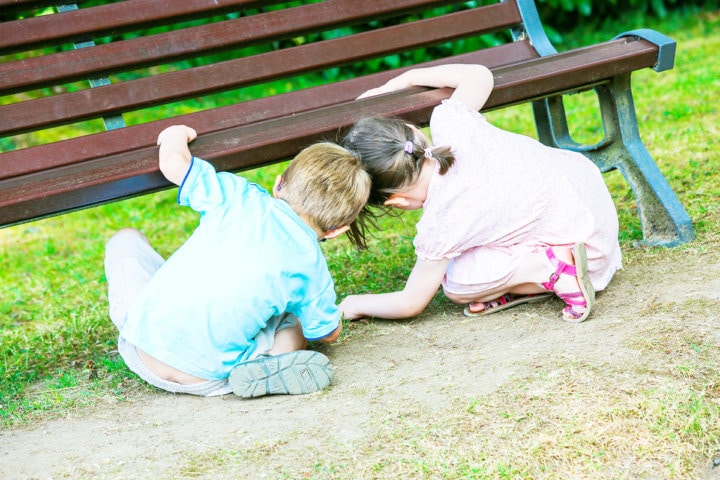
Kids need routines. But a routine isn’t a fixed schedule that can’t be broken.
There are ways to add surprises to your toddler’s routines.
For instance, if you take your toddler to the park every day, you could try alternating between two different parks.
By changing your toddler’s daily toys, too, you are spicing up her routine.
There is a long and heated debate about routine being a creativity booster or a creativity killer. I won’t get into that, I believe in the importance of routines for young children.
However, there are healthy changes that you can make to challenge your toddler. Thus, boosting her brain power trying to figure out how to solve these challenges.
You can try changing the route when you pick her up from school. We do this a lot. We stop to smell the new flowers, show our son the new colors, and the new buildings and trees.
We change supermarkets, malls, parks, toys. You name it.
But, we do try to maintain our changes to what’s predictable. Our son knows that he gets home every day right after school to have lunch. He just doesn’t know what route we’ll be taking.
Those small changes have made him a more engaging child.
Two months ago, he’d just stay in his stroller, staring. But now, he’s asking us questions about the environment that surrounds him.
4. Give Them a Space for Creativity
This is the single most important limitation in our creative process.
My husband and I both work from home, so we have a small office in our house. We were both doing so good by limiting everything work-related to our office that we decided to try it with Oliver.
Half of the office is for him, and he can do whatever mess he wants.
This is the only place in the house where he can paint the walls, his table, our table, or the floor.
He can make music with whatever he finds in the room. He can bang toys together, or bang his small chair against the floor.
He has understood that this space is for free-play (We try to mimic elements of heuristic play). And he is curious every day about the things he can do in it.
5. Play With Your Toddler
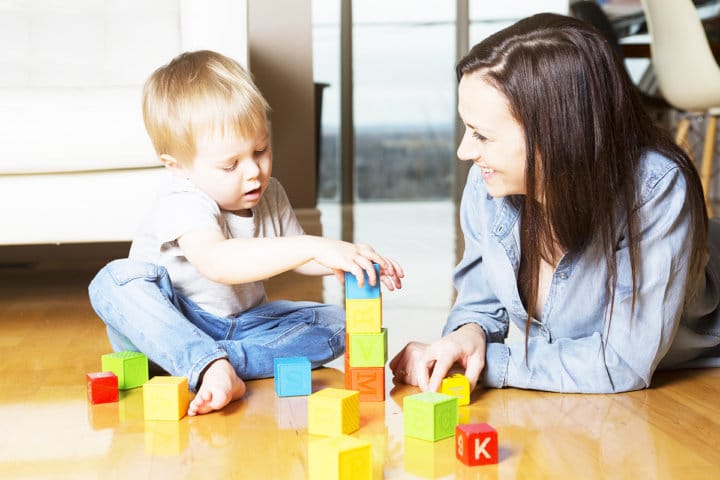
Toddlers love playing with their parents. So, why not use this as a creativity booster?
Letting them guide playtime activities makes them feel in charge and keep testing limits! You become a creativity enhancer!
If your toddler wants to make a mess, be part of the mess. If your toddler wants to garden, go and garden. Just go with the flow.
I’m teaching my 2-year-old his ABCs by using the fact that he loves painting… on mommy’s arms! So whenever he comes to paint on my arms, I start painting letters and repeating the sounds.
Use playtime together as a space for discovery!
6. Give Your Toddler Simple Responsibilities
Creativity is all about problem-solving. By giving your toddler simple responsibilities you give him simple problems to solve.
For example, Oliver is in charge of laundry (Or, we make him think that he is). He joins us when we are washing clothes. And we assign him simple tasks, like handing us the clothes to wash or hang.
He loves it and has made the tasks more efficient with time. He also has to put his toys away after playtime, wash his hands, brush his teeth and read a book before bedtime.
He doesn’t know how to read yet, but we’ll get back to that one later.
We have watched him put his brain to work every time we ask him to do something. Sometimes, he doesn’t want to do it at all, and that is great because he finds creative ways to avoid them!
Have you ever seen a toddler trying to shy away from something? It’s not only hilarious but awe-inspiring. My son, for instance, has an “I don’t want to do it” song, which he hums when he’s trying to avoid doing stuff. He made it up himself, and it was so funny that he got away with it.
He now sings it every time he doesn’t want to cooperate.
7. Read With Your Toddler
Not read to your toddler, but read with your toddler.
I ask Oliver to read a bedtime story to me, and he brings me his favorite book and talks in his own language while turning the pages.
It’s super cute, super funny, and a super creativity enhancer!
Of course, it all started with me reading to him. One night I was simply too tired to read, and he was expecting a story. So I asked him to read it to me instead.
It worked wonders.
He can go on and on for hours “reading.” He laughs and gets angry at his own story. I can understand some words, but half of it is just cute babbling.
He shows me things he recognizes and calls them by his name. He knows the characters names and repeats them over and over again.
I can only start to imagine the things he may be saying!
8. Have a New Project Every 3 to 6 Months
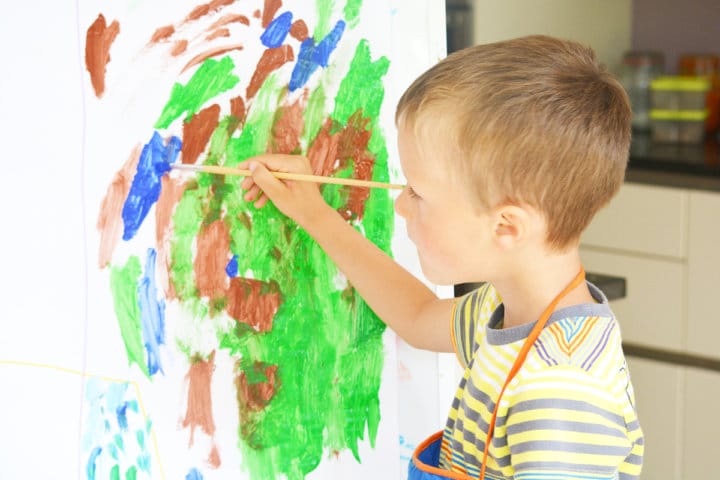
Being creative isn’t always about having ideas. In fact, creativity is a process. I love how Jessica Stillman describes it as a 4-stage process.
Having a new project every 3 to 6 months sets a basis of rules for the first step of the creative spark: “Preparation.” And it all flows smoothly from there.
Oliver goes to a school with a Project-Based-Learning (PBL) System, where the teachers take a more practical approach to his education.
He’s still a toddler, but we have greatly resonated with this system, and we have seen his curiosity and creativity skyrocket!
PBL is known for fostering a child’s creativity. It’s very simple in its core: Children have more control and independence over what they are learning.
So, we decided to mimic this approach at home by setting up simple projects to do together, a few of them are:
- Creating (and flying) kites, to learn about shapes and colors.
- Cooking cold meals, to learn about simple processes and flavors.
Our current project is building our small orchard. Ollie digs the earth himself and waters the seeds. We are also building a home-made irrigation system, and having a lot of fun doing it for summer!
All in all, fostering your child’s creativity is all about what works for you as a family. Being involved is key, and messy playtimes are, more often than not, a must.
We all learn by doing, and children are no exception. So by giving your child tasks that are challenging for him, you are laying the foundations for a creative process.
Can you think of other ways to foster creativity in children? Let’s brainstorm together in the comment section!




Leave a Reply